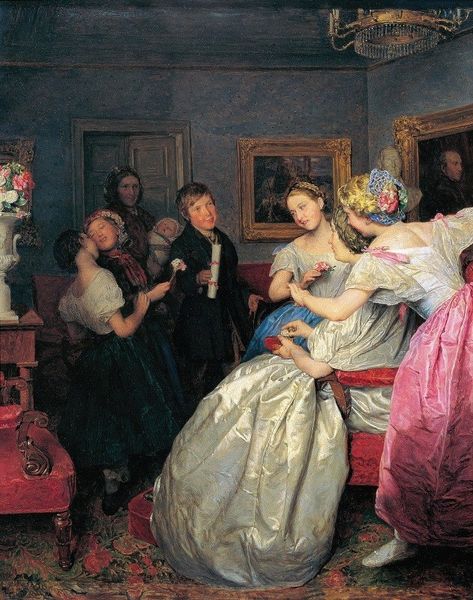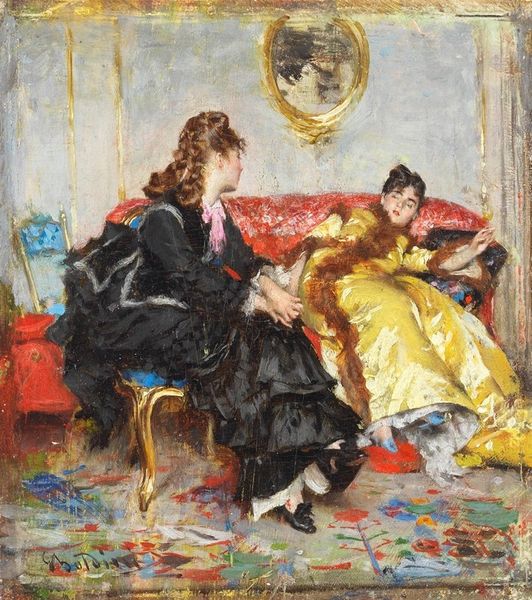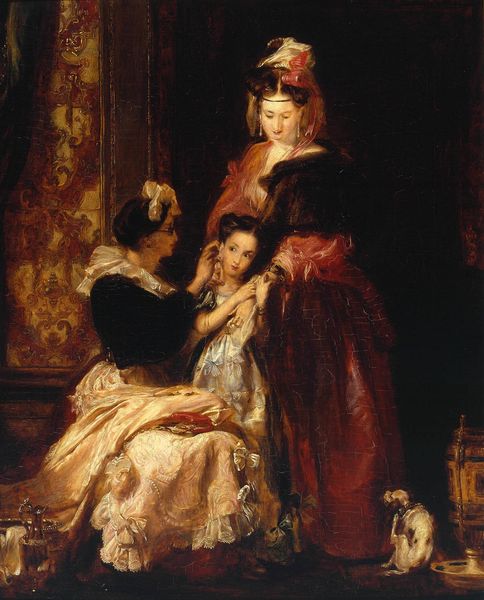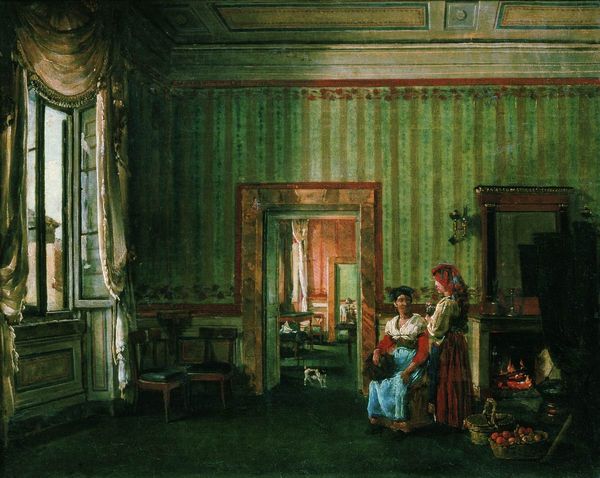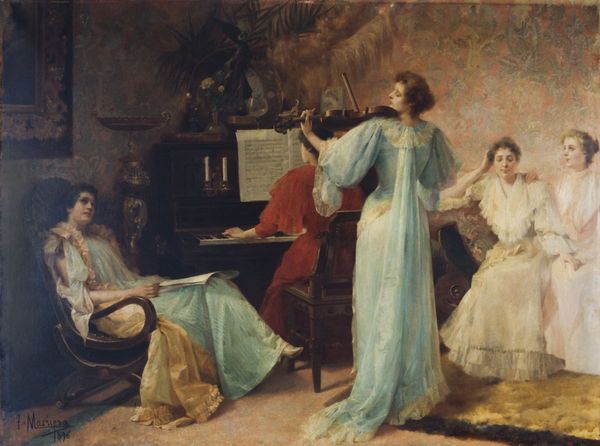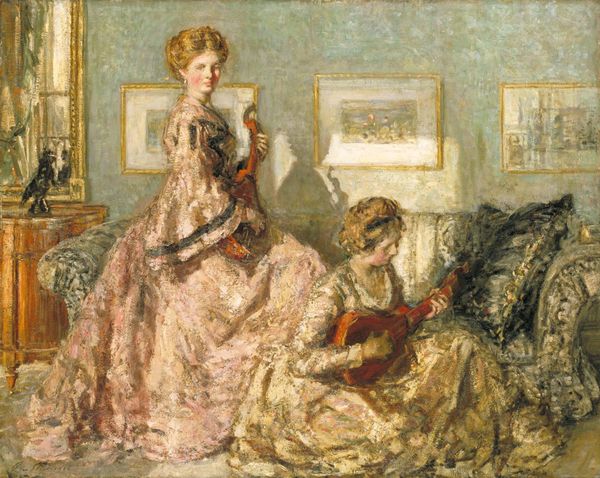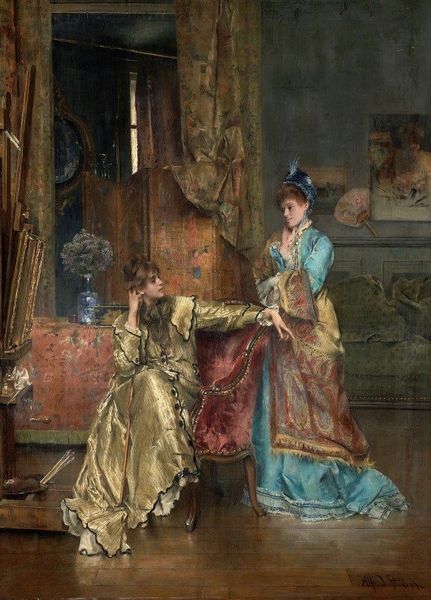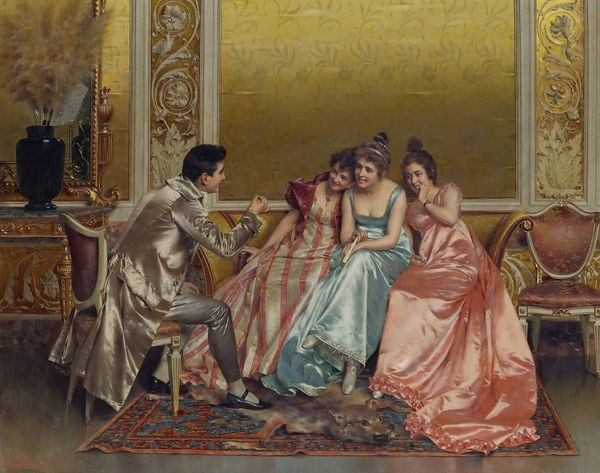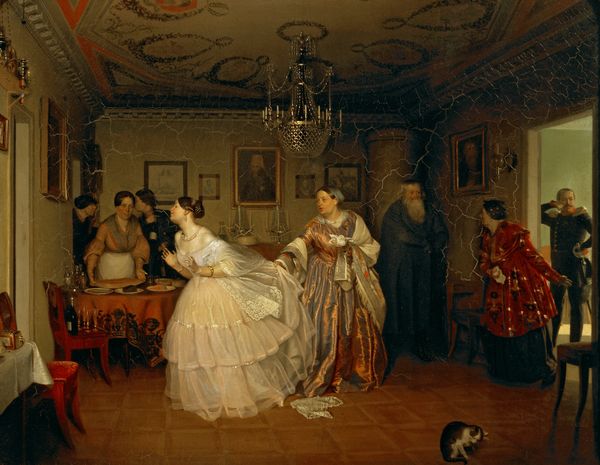
Copyright: Public domain
Curator: Bronnikov's "Fees for the Crown," painted in 1856, depicts a scene of women preparing for an event of societal significance. Editor: The hazy application of paint, especially around the edges, certainly lends a dreamlike quality. The gowns have lovely detailing, I particularly love the floral appliques, however the colour composition as a whole appears heavy-handed, doesn't it? Curator: Considering its creation in 19th-century Russia, the artwork likely portrays the meticulous preparations surrounding court life. There's an emphasis on status and the visible markers thereof. Observe the woman in the background meticulously taking a gown out of a wardrobe; Bronnikov certainly highlights the labor and the social implications associated with garments. Editor: There is some rather curious staging happening as well: the subjects are divided between left, centre and background - creating something akin to stacked stages rather than one immersive scene. The chairs appear abandoned, angled toward the fourth wall - it lacks intimacy and appears theatrical. Curator: Indeed. What Bronnikov does so well here is capture the atmosphere and the expectations surrounding such gatherings, where appearances are everything. "Fees for the Crown" encourages viewers to analyze the expectations women had to meet in Tsarist Russia and how they navigated this sphere of political authority. Editor: Though "Fees for the Crown" may be less structurally refined than some of Bronnikov's later efforts, it does express the drama inherent within intimate gatherings. It encourages viewers to delve deeper, to consider context, technique, and emotional impact within a painterly staging that feels theatrical and revealing. Curator: Yes, its socio-historical context coupled with Bronnikov's treatment of the characters certainly sheds light on how clothing acted as political props during the mid-19th century.
Comments
No comments
Be the first to comment and join the conversation on the ultimate creative platform.
